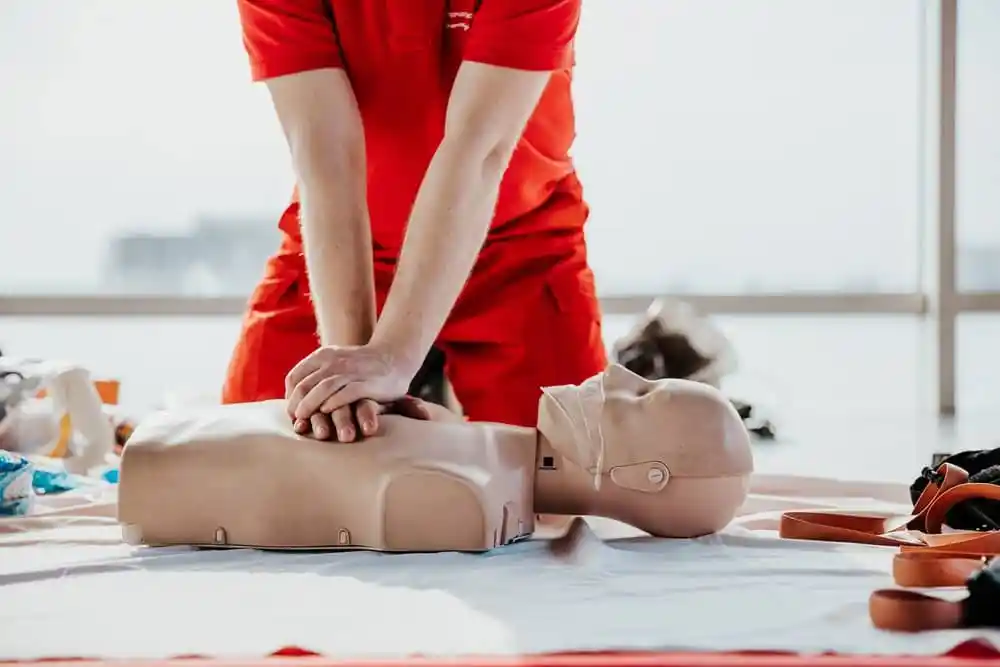Cardiopulmonary Resuscitation (CPR) is a critical life-saving technique used in emergencies when someone’s heartbeat or breathing has stopped. With approximately 350,000 people dying from cardiac arrest each year—many of whom experience it outside hospitals; knowing how to perform CPR is necessary. Today, many people are opting for completing the certification onlineas it can be completed in the convenience of their homes. Let’s explore whyonline CPR certification is becoming so popular and how you can choose the right course for you.
Choose The Right Online CPR Certification
Selecting a good online CPR certification is needed to make sure you receive the best quality training. To select the best program, follow these steps:
Research Accredited Programs
Ensure the online CPR course is accredited by reputable organizations. Accreditation ensures the course meets recognized standards.
Check Course Content
Checking the course content of an online CPR certification is a crucial step that should not be overlooked. This process ensures that you receive comprehensive, up-to-date training that meets your specific needs and industry standards. Here’s a guide on what an online CPR course should cover:
- Assessing the Situation: How to determine if someone needs CPR.
- Chest Compressions: The proper technique and rhythm for performing chest compressions.
- Rescue Breaths: How to administer effective rescue breaths.
- Using an AED: How to operate an Automated External Defibrillator (AED) crucial for reviving someone experiencing cardiac arrest.
Make sure that the courses you choose contain detailed instructions and demonstrations so that you can understand them thoroughly.
Read Reviews and Testimonials
Check reviews from previous participants to gauge course quality. Positive feedback often highlights clear instructions, engaging content, and useful practice materials, while negative reviews may point out issues such as unclear instructions or technical difficulties.
Assess Cost and Convenience
Online courses can vary in price, as some may be free while others charge a small fee. Consider your budget and choose a course that fits your schedule, allowing you to learn at your own pace. Many online courses offer lifetime access to materials for future reference.
In-Person V/S Online CPR
Choosing between in-person and online CPR classes depends on your learning style and schedule. The differences between taking an in-person and online CPR course are:
| Parameter | In-Person CPR classes | Online CPR classes |
| Convenience | It requires attending a class at a specific time and place, which can be less convenient for those who have busy schedules. | Learn from home at your own pace, no need to travel. |
| Cost | Can be more expensive due to instructor fees and travel costs. While you benefit from real-time feedback and interaction, the higher cost might be a barrier for some. | Often cheaper as there are no extra costs like travel expenses. Many online courses offer discounts or bundle deals, making them more affordable. |
| Hands-on Practice | Provides immediate hands-on practice with feedback from an instructor, which is crucial for mastering the technique. Improper CPR can be ineffective, so real-time guidance is beneficial. | Typically offers limited hands-on practice and feedback. To ensure effectiveness, additional practice with a CPR manikin may be needed. Some courses include virtual simulations, but they cannot fully replace physical practice. |
| Learning Style | Better for those who learn best through direct interaction and immediate feedback from an instructor.Structured environments and personal guidance can enhance learning. | Ideal for self-directed learners who are comfortable with online platforms. Effective for those who can stay motivated and disciplined while learning through videos and quizzes. |
Advantages of Online CPR
Opting for an online CPR certification can cater to various needs and lifestyles. The key benefits of taking an online CPR course are:
- Flexibility: Online CPR courses provide great flexibility, allowing you to learn anytime and anywhere. They are best for people with busy schedules or limited mobility. You can fit the training around your personal life, whether you’re a professional, a parent, or someone with other commitments.
- Lower Cost: Online courses are generally more affordable than in-person classes. You save on travel and material costs, and many online courses offer free or discounted resources. This makes CPR training accessible to a broader audience, regardless of financial constraints.
- Access to Quality Resources: Online CPR courses often feature high-quality videos, interactive quizzes, and downloadable materials. These resources can be revisited at any time to refresh your knowledge. Some courses also offer additional content on related topics, such as first aid or AED use, enhancing your overall emergency preparedness.
- Self-Paced Learning: With online CPR training, you can learn at your own pace. You have the flexibility to pause, rewind, and review content as needed, which will help make the learning process less stressful and more effective.
- Immediate Certification: On successful completion, most online courses provide an instant certification. This is particularly useful if you need certification quickly for a job or volunteer opportunity. You can download and print your certification card immediately after passing the final assessment.
Tips for Successful Online CPR Learning
Learning how to perform CPR can be very effective if it is done with the right approach. Here are some tips that will help you succeed in your online CPR certification:
- Stay Engaged: Actively engage with the course materials. Take notes, participate in quizzes, and practice along with the instructional videos to reinforce your learning.
- Practice Regularly: Practice is crucial, even in an online course. If possible, use a CPR manikin to practice chest compressions and rescue breaths. Regular practice helps build muscle memory and increases your confidence in performing CPR.
- Join Online Communities: Connect with forums or social media groups related to CPR and first aid. These communities can offer additional support, tips, and learning opportunities, helping to enhance your understanding and keep you motivated.
- Keep Certification Updated: CPR guidelines can evolve, so ensure your certification stays current. Most certifications are valid for two years, after which you’ll need to take a refresher course. Staying updated ensures you are always prepared with the latest techniques and best practices.
Summing Up
Online CPR certification is increasingly popular due to its flexibility, cost-effectiveness, and the ability to learn at your own pace. By selecting the right program, staying engaged, and practising regularly, you can become a confident and certified CPR provider. Regardless of whether you choose online or in-person training, the key is to learn CPR—it’s a crucial skill that could help you save a life one day. Take advantage of the convenience and accessibility of online courses to enhance your emergency preparedness.




